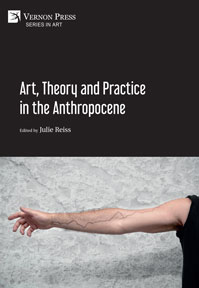Arts in the Margins of World Encounters
Willemijn de Jong, Eriko Aoki, John Clammer (Eds.)
by Maria Bonome Pederneiras (Museu Nacional/Universidade Federal do Rio de Janeiro, Brazil), Willemijn de Jong (University of Zurich, Switzerland), Eriko Aoki (Ryukoku University, Japan), Sachiko Kubota (Ashiya University, Japan), Matori Yamamoto (Hosei University, Japan), Ilana Seltzer Goldstein (Federal University of São Paulo, Brazil), Magdalena Sophia Toledo (Museu Nacional, UFRJ, Brasil; Universidad Alberto Hurtado, Chile), Abeer Gupta (Krishnakriti Foundation, India), Andrea Grieder (University of Technologies and Arts, Rwanda), John Clammer (O.P. Jindal Global University, India)
Purchase this book
(click here to change currency)
The discussion about such a complex topic as arts at the margins, their relation to the global art market and the violence that occasionally marks this relationship – be it as exclusion, as a medium of arbitrary hierarchization, or appropriation – is manifold and highly interesting.
In their contributions, the authors and editors address the extraordinary heterogeneity of the arts – ranging from textiles to masks, statues, paintings, theatre performances and poems: for a long time many of these arts have been (and some still are) assigned to “folk” art and not to art. The contributions show that and how these categorizations can no longer be justified – especially since aesthetic categories can no longer be thought of as universal. Based on field research all over the world (New Zealand, Australia, Japan, Indonesia, India, Rwanda, Martinique, Brazil), the authors analyse art production in all its facets: including social/cultural embeddedness, political conditions, geographical features, historical formations as well as changing perception patterns of local producers as well as the global actors of the art world.
In short, they prove the power of art production as well as of the works and their extraordinary agency. The analyses refer to important theoretical approaches of the anthropology of art, above all, to Alfred Gell's approach developed in 'Art and Agency'. Inspired by this, concepts such as Andrea Grieder's “poetic efficacy” are generated. New concepts such as Gita Wolf's “symbolic inversion” are also created. The benefit of reading these differentiated and empirically grounded contributions lies in the aesthetic richness they convey, in the possible transformations they suggest in a wide range of local as well as translocal settings, and finally, in furthering the approach of unraveling dichotomic thinking in the field of arts as well.
Dr Anna Schmid
Director of the Museum der Kulturen Basel, Switzerland
[...] All chapters in the volume demonstrate the epistemological relevance of the idea of “margins,” be it by asking where they are to be located, who determines or redetermines them, or whether a particular attention to them may transform them, their aesthetics and potential, their strength and power, which should not be underestimated. Margins, or peripheries, however conceived, may be described as a zone for demarcation, for transgression, for resistance, as dynamic spaces highlighting– if by contrasting and challenging them – conventions and norms. Precisely because they can be constructed and indeed are constructed, and this by different actors with different agendas, “margins” can open thinking spaces. [...]
[Extract from book review appearing at the journal 'Anthropos', 118.2023.1., pp. 226-228. Reviewer: Paola von Wyss-Giacosa]
'Arts in the Margins of World Encounters' presents original contributions that deal with artworks of differently marginalized people—such as ethnic minorities, refugees, immigrants, disabled people, and descendants of slaves—, a wide variety of art forms—like clay figures, textile, paintings, poems, museum exhibits and theatre performances—, and original data based on committed, long-term fieldwork and/or archival research in Brazil, Martinique, Rwanda, India, Indonesia, Japan, Australia, and New Zealand.
The volume develops theoretical approaches inspired by innovative theorists and is based on currently debated analytical categories including the ethnographic turn in contemporary art, polycentric aesthetics, and aesthetic cannibalization, among others. This collection also incorporates fascinating and intriguing contemporary cases, but with solid theoretical arguments and grounds.
'Arts in the Margins of World Encounters' will appeal to students at all levels, scholars, and practitioners in arts, aesthetics, anthropology, social inequality, and discrimination, as well as researchers in other fields, including post-colonialism and cultural organizations.
List of figures
Prologue: Arts, world encounters, markets and marginality: a decolonising perspective
Willemijn de Jong
University of Zurich, Switzerland
Eriko Aoki
Ryukoku University, Japan
John Clammer
O.P. Jindal Global University, India
Part I. Re-Creating Art Conventions in the Margins of World Encounters
Chapter 1
Dress as art: portrait of an ikat weaver in Eastern Indonesia
Willemijn de Jong
University of Zurich, Switzerland
Chapter 2
The enchantment of topeng: thinking art through Balinese masks
Maria Bonome Pederneiras
Museu Nacional/Universidade Federal do Rio de Janeiro, Brazil
Chapter 3
Aboriginal art, transits and transitions: exhibitions in Japan and the US
Sachiko Kubota
Kobe University, Japan
Part II. Appropriating and Resisting the Global Art World
Chapter 4
Life, art and commoditisation: how disabled people’s works in Japan encountered gazes of the international art world
Eriko Aoki
Ryukoku University, Japan
Chapter 5
Heritage and identity: contemporary art practices of Pacific peoples in New Zealand
Matori Yamamoto
Housei University, Japan
Chapter 6
Indigenous arts in Brazil: aesthetics, cosmology and politics
Ilana Seltzer Goldstein
Federal University of São Paulo, Brazil
Chapter 7
Artwork and performances in the creation of Martinican history and culture
Magdalena Sophia Toledo
Museu Nacional, UFRJ, Brasil; Universidad Alberto Hurtado, Chile
Part III. New Forms of Art and Ethnography in Museums and Development
Chapter 8
Material culture and art practice in Ladakh: notes from a collaborative art project
Abeer Gupta
Krishnakriti Foundation, India
Chapter 9
Poets from the refugee camps in Rwanda talk to the world
Andrea Grieder
University of Technologies and Arts, Rwanda
Epilogue
Art in/from the margins: some comparative and theoretical reflections
John Clammer
O.P. Jindal Global University, India
Contributors
Index
Willemijn de Jong is a researcher and has taught anthropology as an Associate Professor at the Institute of Social Anthropology and Cultural Studies (ISEK), University of Zurich. She has also taught at the Universities of Bern and Vienna. She was awarded grants by the Swiss National Science Foundation for national and international research projects she has headed. In recent years she has worked on textiles, art, fashion and globalization, and she was a guest curator at the Museum der Kulturen Basel. She has published widely in German, and her publications in English include "Rice Rituals, Kinship Identities and Ethnicity in Central Flores" in 'Food and Kinship in Southeast Asia' (2007), and "Red Threads in Flores" in 'The Common Thread: The Warp and Weft of Thinking' (2016). She recently co-edited the publication to the exhibition at the Museum der Kulturen Basel, both with the title 'Striking Patterns: Global Traces in Local Ikat Fashion' (2016), and 'Urban Dreams: Transformations of Family Life in Burkina Faso' (2018).
Eriko Aoki is Professor of Anthropology at Ryukoku University, Japan. She was granted a D.Phil. by the Australian National University in 1996. She has conducted anthropological research on poetic language, gift exchanges, and rituals in Central Flores, Indonesia, since 1979, and on children of ethnic minorities, coal-mining societies, Indonesian nursing labour immigrants, and art brut in Japan since the late 1990s. Her theoretical interests are semiotics, fetishism, modernity, and enchantment. Her publications include "'Center' and 'Periphery' in Oral Historiography of a Peripheral Area in Southeast Indonesia" in 'Globalization in Southeast Asia' (Berghahn Books 2003) and "Entangled Democracy, Decentralization and Lifeworld in Flores under Global Trends" in 'Foundations for Local Governance: Decentralization in Comparative Perspective' (Springer 2008). She also published a single-authored book in Japanese.
John Clammer is Professor of Sociology in the Jindal School of Liberal Arts and Humanities at O.P. Jindal Global University (Delhi, India). He previously taught at Sophia University (Tokyo) for almost two decades, and prior to that at the National University of Singapore. Dr Clammer has been a visiting professor or fellow at universities around the world including the United Nations University, Kent, Oxford, Handong, Tokyo, Buenos Aires, Murdoch, Pondicherry, and the Bauhaus Universität Weimar. He has also been a fellow of the Institutes of Advanced Studies at Warwick University and at the Jawaharlal Nehru University, Delhi. Professor Clammer’s work has encompassed many fields including sociological and anthropological theory, the sociology of religion, solidarity economy, and the sociology and anthropology of Southeast Asia and Japan. His recent work has been on the sociology of art and the interface of culture and development, includes monographs like ‘Culture, Development and Social Theory’, ‘Towards an Integrated Social Development, Art, Culture and International Development’, ‘Vision and Society: Towards a Sociology and Anthropology from Art’, and the co-edited volume ‘The Aesthetics of Development: Art, Culture and Social Transformation’, as well as the forthcoming ‘Cultural Rights and Justice: Sustainable Development, the Arts and the Body’.
anthropology, art, agency, post-colonialism, belonging, identities, commodification, globalization, minority, marginality
See also
Bibliographic Information
Book Title
Arts in the Margins of World Encounters
ISBN
978-1-62273-602-7
Edition
1st
Number of pages
251
Physical size
236mm x 160mm

![Arts in the Margins of World Encounters [Hardback]](/file/14583/b5f8ffead2edbc8425dd8c6da39178eb/1619514690.jpg)






